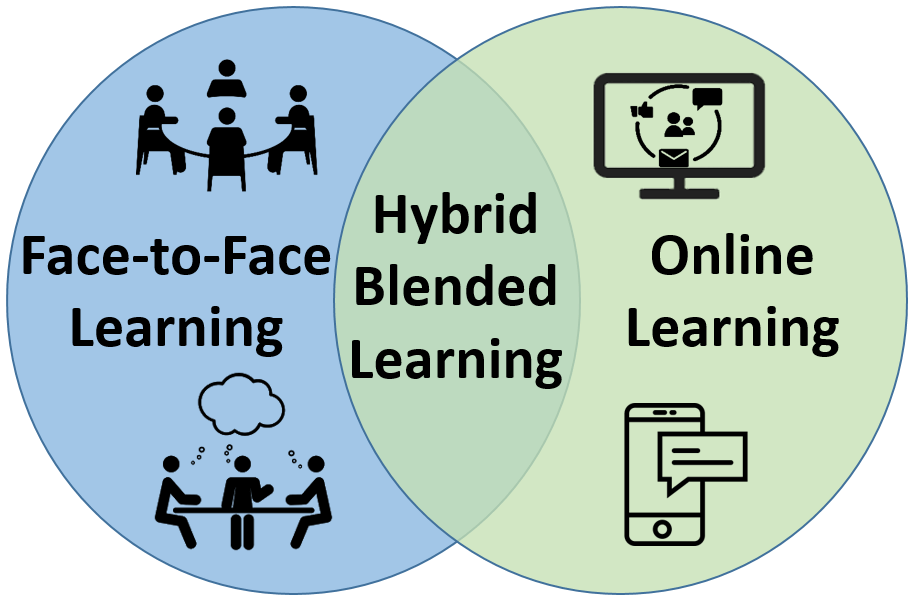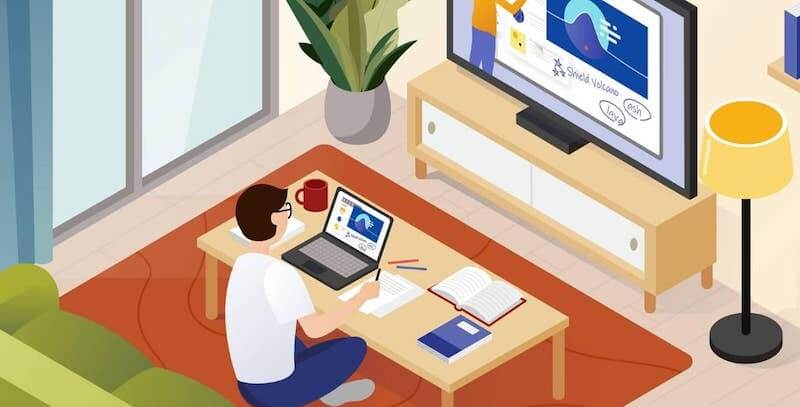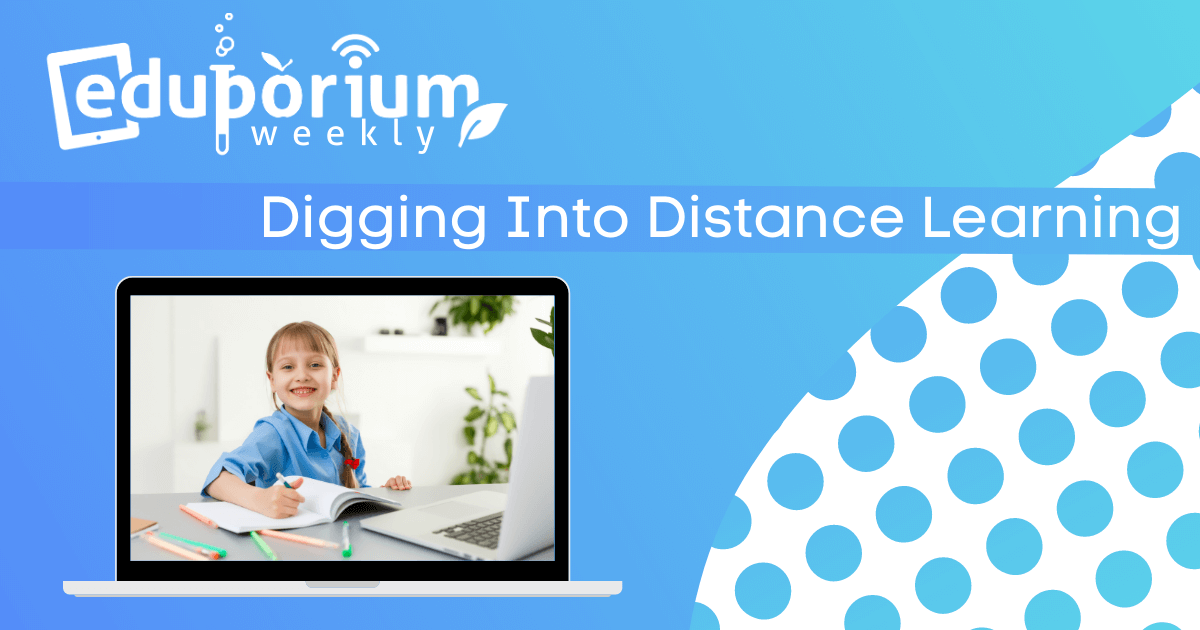Distance learning has, of course, affected nearly every teacher and student in the last year. What works well for some of them, however, is not as effective or sometimes impossible for others to find success. This has led to educators in different situations adding various wrinkles to their remote learning strategies. As a result, there's a lot of sharing going on when it comes to trying to find that perfect recipe for success. As education (at least partly) continues outside of the classroom, educators continue to explore different types of distance learning. Whether you’re fully remote, in a hybrid model, live with students, or trying asynchronous learning, we’ll share suggestions for improvements.
Basic Types of Distance Learning
Many educators around the world have likely experimented with different distance learning strategies since learning went remote in an effort to find something that works well for their students. These strategies might differ for fully remote students as opposed to a hybrid model since they're in the classroom sometimes. The most common type of distance learning, as you could probably guess by now, is video conferencing. This approach enables face-to-face meetings using a video platform so they can be together at their normal times. It ideally includes all members of the class in a lecture or interactive discussion designed to replicate the classroom. Video conferencing includes benefits like more opportunities for communication and better structure for lessons.
One of the other common types of distance learning is hybrid learning—something that you’ve almost certainly heard about, drawn up plans for, or are using on a regular basis. Hybrid learning involves both synchronous and asynchronous instruction and students physically going to the school building part of the time. It often involves some introductory instruction and students then working independently to complete assignments at their own pace. This self-paced element is valuable especially since students can contact teachers for assistance whenever needed, combining independence with additional support. Students who enjoy working independently typically prefer hybrid learning and many of those students have been succeeding throughout the pandemic.
Next, we have a model known as open schedule online learning, which is a variant of asynchronous instruction. It affords students with even more freedom and the chance to complete assignments on their own schedule. They often have online textbooks or curricular content, access to class-wide discussion boards, and a communication channel with their teacher (usually an email address or messaging platform). Providing students with nothing but a deadline, they’re then able to work completely at their own pace. While some students might like open schedule learning and added independence, it requires learning key soft skills on the fly. Since they’re not monitored as closely but still expected to complete all assignments, this approach to distance learning has helped. Many students are even improving self-discipline, accountability, and motivation as they learn on their own.

Distance Learning Delivery
Just like there are different types of distance learning in general, there are different possibilities for delivering content to students. And, like in most situations, this depends on student preference, learning environment, and device reliability. Unless we’re talking about hybrid learning, which is technically a subset of distance learning, then the first main feature of distance education is that it requires an online connection for teachers and students. With video conferencing tools available these days, most distance learning takes place live in a similar format to classroom instruction. As K-12 educators continue to adapt to online instruction, some believe it will be much more common over the next few years, though probably not as frequent as in higher ed.
Some educators have also tried a distance learning method known as correspondence. This involves students being much more independent in their education. It also essentially means educators must send learning materials, assignments, and feedback to students through the mail. Though teachers can send materials via email or post them somewhere accessible, physical delivery could lead to confusion and inefficiency. Conversely, this might be the only option for some students if they don't have an Internet connection for learning. Since the pandemic began, many students couldn't log in to online classrooms and sending materials to them could help.
Another way to categorize distance learning is to look at the pace at which students complete assignments. This helps educators control the remote learning experience and gather data on how students complete work and progress in mastery. Educators can require students to reach a certain point by a certain time, but this can be counterproductive at times. Letting students move at their own pace is often more successful and provides more freedom, which is something many need. Paced learning, however, could be easier on educators since it would allow them to create lesson plans, assignments, and a better structure while facilitating progress at the same pace for each student. If it works for all students, it might not be a bad idea.
Synchronous, Asynchronous, and Blended Distance Learning
We’ve discussed different types of instructional deliveries for distance learning but it won’t hurt to go into more detail. The two most common options for how to teach remotely typically come down to synchronous learning and asynchronous learning. Depending on which method educators use, they'll deliver content differently and students will engage with it differently as well. Synchronous learning involves students and teachers meeting live from different locations and interacting like they were in the same classroom. It requires a video conferencing platform, like Zoom or Google Hangouts, and should be taking place in real time. Being all together at the same time through the use of video chatting, however, allows for some traditional classroom activities. This includes discussions, group chats, and direct instruction, which is often ideal.
The other option for contemporary distance learning is asynchronous instruction, which involves learning that occurs outside of live class meetings. It may sometimes be impossible to get every student online together (and some might be unable to join at all). Asynchronous learning involves a large amount of self-directed and independent learning as students utilize materials in the way they prefer. One of the benefits of asynchronous learning is students can access content anytime and move through it at their pace. Asynchronous learning is more of an on-demand option than synchronous learning and, if sharing video and content files with students, this also creates a library of educational resources for them to look back on as often as needed.
A third option for instructional delivery is a mix of synchronous and asynchronous learning. This allows educators to combine benefits that each method provides and allows students to gain valuable experiences associated with each. One example of combining the two is delivering content asynchronously and then bringing students together for collaboration during live meetings. This allows them to conduct independent research and share ideas with classmates—something that’s more relevant to older students. It could also involve mostly independent student work with one-on-one teacher check-ins sprinkled in from time to time. As a hybrid model of sorts, mixing synchronous and asynchronous learning adds flexibility and limits potential setbacks for students.

Modular Distance Learning
One term we’ve heard teachers bring up in various conversations, particularly since the start of the 2020-21 school year, is modular learning. One of the types of distance learning, modular learning refers to more individualized instruction in online learning with a focus on one-on-one student-teacher meetings. In order to make this possible, student-teacher meetings are often very quick and then students work independently on content that’s provided to them whether that may be video content, print content, or physical and digital assignments. The check-ins with the teacher often occur on a regular basis whether that’s every day, every other day, or so on. Being able to speak face-to-face with students allows teachers to really understand where each particular student is at in terms of grasping material and responding to any intervention attempts previously made.
Since it's largely individualized, modular distance learning involves a lot of self-learning and self-guided experiences. It’s similar to asynchronous learning in the sense that students are free to access the materials at any time and move at a pace that works for them. Teachers are typically available to the students during school hours or they can set up appointments for added one-on-one time to ask questions or clarify confusion, but, ideally, getting held up on one little thing shouldn’t stop students from pushing forward with another task. As for learning materials, media resources and digital content is typically what educators use in modular distance learning. They might also try using digital packets, web programs or applications, and other electronic resources.
Modular learning can also be thought of in a similar way as classroom units. Content is often presented in modules and students learn about one topic or subject before moving to something else. The added element of individual meetings helps ensure that students are doing well in their independent learning and allows teachers to gauge if the modular approach is working. Like in many cases, it may work well for some students and be a greater challenge for others, resulting in teachers spending more time with the students who need more assistance and letting those who have proven they can work well on their own get after it. If all else fails, pivoting back to synchronous instruction remains an option, though a commitment to trying modular learning would have taken time to implement and might wind up discouraging educators if abandoned.
IT Services and Distance Learning
A lot has changed with the pandemic and the attempts at continuing meaningful educational experiences since switching to distance learning. That switch, as many of us might guess, relies on one key factor to make everything work: Technology. Without technology and knowing how to maximize it, it’s almost impossible to continue teaching like they could in the classroom. When it comes to distance learning, the need for strong connections, equal access, and educator support has fallen largely on the shoulders of school and district IT leaders and it’s opened the eyes of many of them. We could still be in the front half of the remote schooling period and the learning transformations have been huge. Without IT experts and the infrastructure in place, however, delivering instruction would be much more difficult.
More than ever, technology is enabling teachers and administrators to stay in touch with one another and to deliver instruction. It’s also helped educators and administrators communicate with students and parents though, sometimes, it's still an obstacle. IT professionals, however, are doing a lot to continue ensuring this period of relying on technology runs smoothly. In some cases, IT leaders have set up multiple communication channels so that parents can send messages to specific recipients for specific questions or issues they have, which is a good example of how the isolation has led to more efficiency and organization in this regard, though it’s certainly not something that’s available to everyone.
When we think about it, it’s actually a pretty simple equation. With the entirety of a school district’s body teaching and learning online almost all the time, they are going to need support from technology experts. While they’re presumably using their own Internet networks, some of the work educators do likely involves the school network and being sure that it's stable and efficient has remained important. The situation has also forced other administrators within schools and districts, like superintendents and principals, to work much more closely with IT staffers to address and, ideally, prevent technical problems associated with remote learning. Also, IT leaders typically have to move a lot faster when working on implementing something new or addressing a technical issue since teachers can’t afford to be wasting any time with students. Of course, the role has evolved but, as always, IT has remained vital to continuing learning.
For the latest EdTech, STEM, and 21st century education news, follow us on Twitter and Instagram. Like us on Facebook, too, or sign up for our newsletter for announcements on the best EdTech deals around! Have an idea for the next Eduporium Weekly theme? Send us a message on any of our social media accounts!




2 Comments